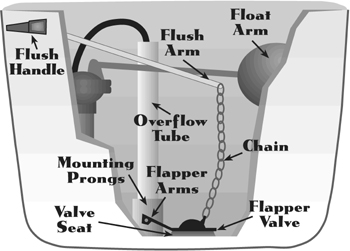Conservation
Did you know that the population in Texas is expected to double over the next 50 years? Our existing water resources are not able to support this growth. WWT strives to leave a legacy of environmental stewardship for the next generation. Join us as we work to educate others about the importance of preserving our most precious natural resource-water. Anything we can do today to help those that come along after us is important.
Water Wise Use in the Kitchen and Laundry
More than 10% of all water used in the home is used in the washing machine. An automatic clothes washer, at full cycle and highest water level, uses 30-35 gallons of water. The dishwasher is also a potential heavy user, requiring 25 gallons for a full cycle. Dishwashing with the tap running takes five gallons per minute – approximately 30 gallons per average washing.
Here are some tips for saving water in your kitchen and laundry:
- Instead of running water continuously, fill wash and rinse basins with water.
- Run only full loads in the dishwasher. Avoid using the extra cycle.
- Chill drinking water in the refrigerator instead of running the tap.
- Use your garbage disposal sparingly, using a garbage can for most kitchen waste.
- Wash only full loads of clothes on the short cycle in your washing machine.
- Check faucets and hose connections for leaks. Repair or replace whenever necessary
Water Conservation in the Bathroom
The toilet is a common source of unnoticed leaks. Undetected, hundreds of gallons of water can be wasted each day. Often leaks occur when the toilet is out of adjustment or parts are worn. Listening carefully for the sound of running water is a good way to detect a possible leak. Food coloring or a dye tablet added to the tank will also reveal water leaking into the toilet bowl. Drop it in the tank and don’t flush. If the water in the bowl turns color, you have a leak. If you discover or suspect a leak, contact your management office as soon as possible.
Here are some tips for saving water in the bathroom:
- Turn off the water while you brush your teeth and save 3 gallons each time you brush.
- Take showers rather than baths. (Garden baths use up to 60 gallons per bath and regular tubs use up to 30 gallons per bath.)
- Cut one minute off your shower time. This will save approximately 700 gallons per month.
- Do not leave water running while cleaning the bathroom fixtures.
How to Diagnose and Fix Leaking Toilets
A leaking toilet can be annoying and wasteful. To check if your toilet has a leak, place a few drops of food coloring in the tank. If coloring is seen in the bowl without flushing, you have a leak. To pinpoint the leak, follow these simple steps:
Here are some tips for saving water in the bathroom:

-
If the tank is not filling with water, the flush ball is not returning to the seat properly.
Solution:- Check to see if the linkage that connects to the trip lever is hung up.
- If that doesn't work, then the ball needs to be replaced. A flapper ball can replace a worn flush valve ball.
-
If the tank is full of water, and water is flowing into the overflow tube, then the valve is not shutting off correctly.
Solution:- Lift up on the float ball. If the water shuts off, then the ball is not sitting properly in the tank. This could be caused by two things:
- The ball has a leak and is full of water. Replace with another ball or flapper.
- The float ball needs adjusting. Use the screw at the base of the rod to lower the float ball so that the water level is 1/2 to 1 inch below the overflow tube.
- If water does not shut off when you lift up on the float ball, then the valve itself needs to be repaired or replaced. Repair kits and new valves with easy to follow instructions are available at local hardware stores.
-
If water is not flowing into the overflow tube, but constantly runs or periodically turns on and off, the flush ball or flapper is not fitting snugly into the flush ball seat. When seats get old, they get pitted and allow water to leak past the seal and down the drain. Minerals and other deposits may also build up on the seat, making it rough.
Solution:- If worn, replace the flush ball or flapper.
- If the problem persists, the seat can be cleaned with steel wool, covered with a repair seal or replaced.
How to Check for Leaks
While you're carefully watching your water usage, it's important to make sure that water is not slipping away due to undetected leaks in your system. Here's a simple procedure that can tell you if you have a leak and how much water you're losing.
- Locate your water meter. It is usually located near your hotwater heater.
- Read the meter twice – first at night after the day's water use has ended, and again in the morning before any water is used.
- Subtract the first number from the second reading to tell how much water (if any) leaked out overnight.
- If you suspect a leak, your pipes and connections should be checked and repaired quickly.
How to Report Leaks and Water Waste
If you see or suspect a water leak on the property or in your apartment, contact your management office as soon as possible. A dripping faucet can waste up to 600 gallons per month! A running toilet can waste many times that amount!

